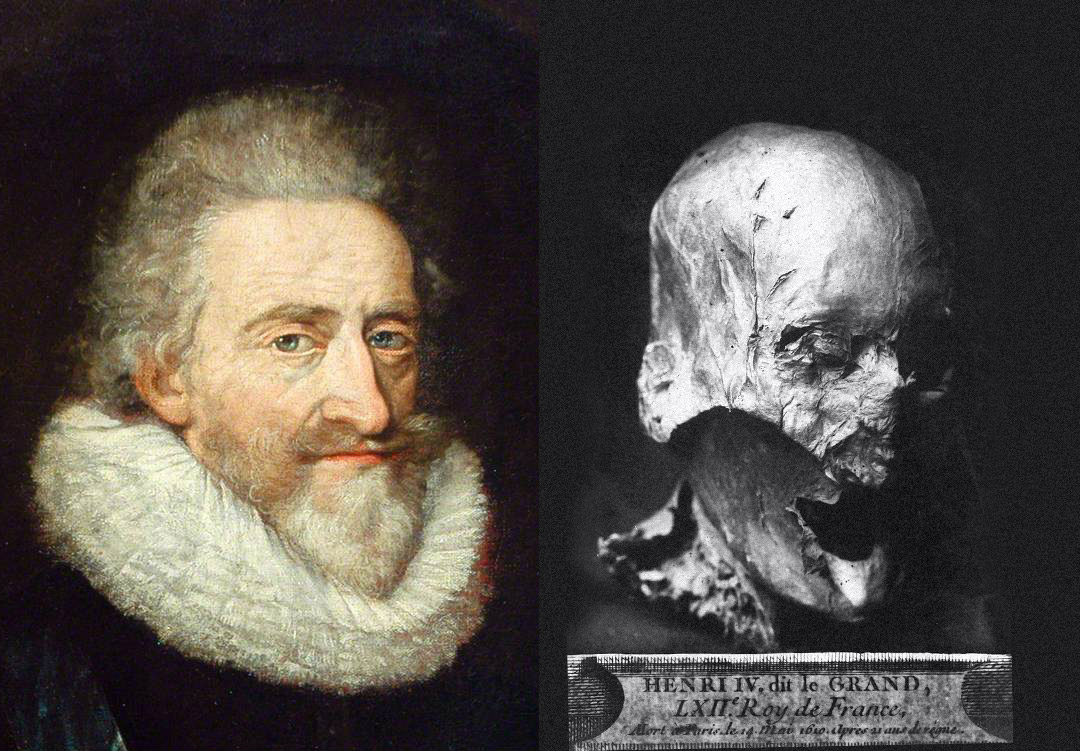© 2020 All Rights Reserved. Do not distribute or repurpose this work without written permission from the copyright holder(s).
Printed from https://www.damninteresting.com/curio/it-belongs-in-a-museum/

In January 2010, two journalists knocked on the door of 84-year-old Frenchman Jacques Bellanger to ask him about the mummified human head he kept in his attic. They suspected that it was the head of King Henri IV of France, who died four hundred years earlier in 1610.
In 1793, in the midst of the French Revolution, a decree was issued that ordered the destruction of all royal tombs. An angry mob obliged on 12 October of that year, plundering the bones and bodies from the crypt of St. Denis and frolicking in former-monarch mockery before abandoning the remains in a ditch. Some enterprising plunderer, however, evidently smuggled away a former head of state.
The contraband mummified head changed hands a few times over the centuries, as did the rumors regarding its origin, most recently being sold at auction to Mr. Bellanger in 1955 for 5,000 francs. In 2010, it was positively identified based on a distinctive dark lesion above his right nostril and a healed fracture above his upper left jaw that coincided with an injury suffered during an assassination attempt in 1594. Mr. Bellanger surrendered the mummified head, scientists scanned it for the purposes of facial reconstruction, and it now resides in the king’s original crypt once more.
© 2020 All Rights Reserved. Do not distribute or repurpose this work without written permission from the copyright holder(s).
Printed from https://www.damninteresting.com/curio/it-belongs-in-a-museum/
Since you enjoyed our work enough to print it out, and read it clear to the end, would you consider donating a few dollars at https://www.damninteresting.com/donate ?
This article makes me wonder what things that were destroyed in 2020 will be resurrected for placement in a museum.
An artifact of this importance should be kept in a museum to preserve and protect it. The mummified head of King Henri IV makes me question what other artifacts of importance have been stolen and passed down through generations and/or sold in auctions.
It is interesting to consider items of historical significance that have been lost to history. I’d venture to guess that only a small fraction of these losses are known, while the vast majority are unknown, and therefore… lost unknowingly?
Honestly, I’m not sure whether to view the idea of these “unknown lost” items as a positive or negative thing. If never found and recognized, these items may never occupy a museum exhibit and therefore be enjoyed and treasured by all. However, if never found and recognized, these items are also protected from destructive human tendencies such as the above ordered destruction of all royal tombs.
Is it a paradox to think that man’s most valuable and meaningful treasures must be protected from man?